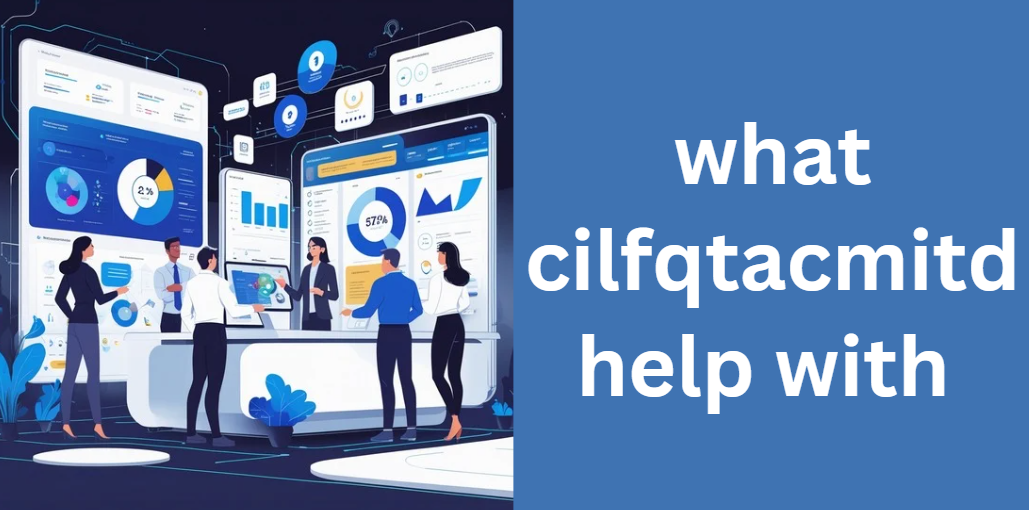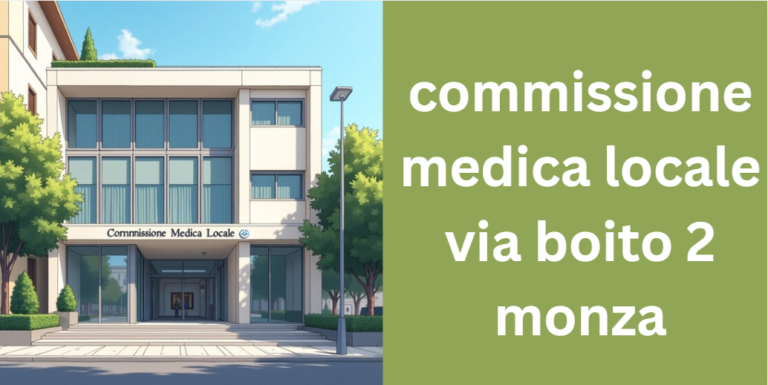The Ultimate Guide to what cilfqtacmitd help with – Unlocking Efficiency Across Industries
what cilfqtacmitd help with is a structured methodology designed to solve complex operational challenges across industries. It brings together advanced technologies to automate repetitive tasks, provide real-time analytics, and enable data-driven decision-making.
Originally developed to address the growing complexity of managing international projects, this framework is now being adopted in fields such as technology, healthcare, education, and even everyday life. Its importance lies in the ability to standardize processes, mitigate risks, and foster seamless collaboration among diverse teams.
Understanding the Framework Behind what cilfqtacmitd help with
Overview and Key Concepts
At its core, what cilfqtacmitd help with combines artificial intelligence, automation, and data analytics into a unified system. This system optimizes workflows by automating mundane tasks and providing actionable insights through real-time data monitoring. The framework focuses on process optimization, risk management, and collaborative management, all aimed at reducing human error and speeding up operations.
For instance, when applied in the tech industry, it can automate routine testing processes, thereby allowing software developers to focus on innovative aspects of product development. In healthcare, it assists in data management and predictive analytics, enabling faster and more accurate diagnoses.
History and Evolution
The origins of what cilfqtacmitd help with can be traced back to the need for standardized, efficient systems in the wake of increasingly complex international projects. Early challenges in managing cross-border operations led to the development of a unified methodology.
Over time, continuous improvements and integrations of emerging technologies have enhanced the framework’s adaptability and performance. Today, it stands as a robust solution for industries aiming to achieve operational excellence.
Core Applications of what cilfqtacmitd help with
Technology and Digital Transformation
In the technology sector, what cilfqtacmitd help with plays a crucial role in accelerating digital transformation. By automating repetitive tasks and enhancing real-time data analysis, it enables companies to improve software development cycles and implement smarter cybersecurity measures. Consider the following list of benefits in a tech context:
- Automates routine coding and testing tasks.
- Enhances predictive modeling for digital projects.
- Improves cybersecurity through constant monitoring.
Business Operations and Process Optimization
For businesses, the framework is a game-changer. It streamlines operations, reduces operational costs, and improves strategic decision-making. A comparative table below illustrates how what cilfqtacmitd help with stands out in key areas:
| Application Area | Benefits Offered by what cilfqtacmitd help with |
|---|---|
| Task Automation | Reduces manual work by automating repetitive tasks efficiently |
| Data-Driven Decision Making | Provides real-time analytics for informed strategic choices |
| Collaborative Management | Centralizes communication to enhance team coordination and project tracking |
Healthcare and Patient Management
In healthcare, the methodology significantly improves diagnostic accuracy and streamlines patient data management. It supports personalized treatment plans by integrating vast amounts of medical data into actionable insights. This leads to better patient care and more efficient hospital operations.
Education and E-Learning
what cilfqtacmitd help with also finds extensive use in education. It personalizes learning experiences by analyzing student data, helps educators tailor lesson plans, and streamlines administrative tasks. This data-driven approach ensures that educational institutions can address learning gaps and boost overall student performance.
Everyday Life and Smart Living
Beyond professional applications, this framework extends into everyday life. With smart home technologies and virtual assistants, what cilfqtacmitd help with automates routine tasks such as scheduling, energy management, and personal reminders. This integration helps individuals save time and manage their daily activities more effectively.
Benefits of Adopting what cilfqtacmitd help with
Adopting what cilfqtacmitd help with offers multiple advantages for organizations and individuals alike. The framework provides cost efficiency by reducing manual labor and operational expenses, saves time through faster process execution, and minimizes human error by standardizing workflows.
It also enhances decision-making with real-time analytics, boosts team collaboration by centralizing communication, and scales seamlessly with growing organizational needs.
Challenges and Considerations
While the benefits are considerable, implementing what cilfqtacmitd help with does present some challenges. Organizations might face a steep learning curve and high initial investment costs as they integrate new technologies.
Compatibility issues with existing systems can also arise, requiring careful planning and potentially expert consultation. Additionally, ethical and privacy concerns must be addressed, particularly when dealing with sensitive data in healthcare or education sectors.
Best Practices for Implementation
Successful implementation of what cilfqtacmitd help with requires a structured approach. Begin by assessing your specific needs and identifying the processes that need optimization. Develop a clear roadmap for integration with measurable goals.
Training is crucial—ensure that all team members understand how to utilize the framework effectively. Continuous monitoring and regular feedback loops are essential for making necessary adjustments. Engaging with experts during the initial phases can also help in overcoming potential challenges and ensuring a smooth transition.
Real-World Case Studies and Examples
Numerous organizations have already benefited from implementing what cilfqtacmitd help with. Technology firms have seen reduced product development cycles and increased software quality through enhanced automation.
In healthcare, institutions report improved patient outcomes and streamlined diagnostic processes. Educational institutions have leveraged the framework to personalize learning experiences and boost student performance. These real-world examples demonstrate the versatility and effectiveness of the methodology across diverse sectors.
Future Trends and Innovations
Looking ahead, the evolution of what cilfqtacmitd help with is set to be driven by advancements in artificial intelligence and machine learning. The integration with Internet of Things (IoT) devices will further enhance real-time data collection and process monitoring.
Improved data security measures will be essential as more sensitive information is processed. Additionally, the framework is likely to expand into new sectors such as renewable energy and urban planning, cementing its role as a cornerstone of modern operational excellence.
Frequently Asked Questions
What are the initial steps an organization should take before implementing what cilfqtacmitd help with?
Before diving into what cilfqtacmitd help with, organizations should conduct a comprehensive internal audit to identify inefficiencies and areas that could benefit from automation. This includes mapping current workflows, setting clear objectives, and evaluating existing technology stacks to ensure compatibility with the framework.
Are there measurable case studies or success metrics available for organizations that have adopted what cilfqtacmitd help with?
Yes, several organizations have reported significant improvements after adopting the framework. While specific metrics vary by industry, companies have seen marked reductions in operational costs, faster turnaround times on projects, and measurable enhancements in team productivity. Research and white papers detailing these outcomes are available from industry-specific publications.
How does what cilfqtacmitd help with ensure robust data security and protect sensitive information?
The framework incorporates advanced encryption techniques and strict access controls to safeguard data. It adheres to international standards and regulatory requirements, ensuring that data integrity and user privacy are maintained across all operational levels.
What types of training and support are available for organizations looking to implement what cilfqtacmitd help with?
Organizations can access comprehensive training programs, including hands-on workshops, online tutorials, and dedicated customer support services. These resources are designed to help teams quickly understand and integrate the framework into their existing systems, ensuring a smooth transition and ongoing support.
How often is what cilfqtacmitd help with updated to incorporate the latest technological advancements?
The framework is continuously refined to keep pace with emerging trends in AI, automation, and data analytics. Regular updates are released to enhance functionality, improve user experience, and address evolving security challenges, ensuring that organizations always have access to state-of-the-art tools and methodologies.
Conclusion
what cilfqtacmitd help with is a transformative framework that revolutionizes how industries manage efficiency and innovation. By integrating AI, automation, and data analytics, it streamlines workflows, enhances collaboration, and drives better outcomes across technology, healthcare, education, and even everyday life.
With robust benefits such as cost savings, time efficiency, and improved accuracy, alongside manageable challenges, this framework equips organizations to thrive in a competitive landscape. Whether you are looking to optimize business operations or enhance patient care, what cilfqtacmitd help with provides the comprehensive tools and strategies to secure long-term success.
Read more
Comprehensive Guide: what is waxillgro279
Ultimate Guide to aeries porterville
The Ultimate Guide to manyroon: Origins, Meaning, and Cultural Impact
Ultimate Guide to business insights shopnaclo: In-Depth Analysis for E-Commerce Success
Ultimate Guide: Ingredients in Vullkozvelex Safe to Use – In-Depth Analysis & Consumer Tips






